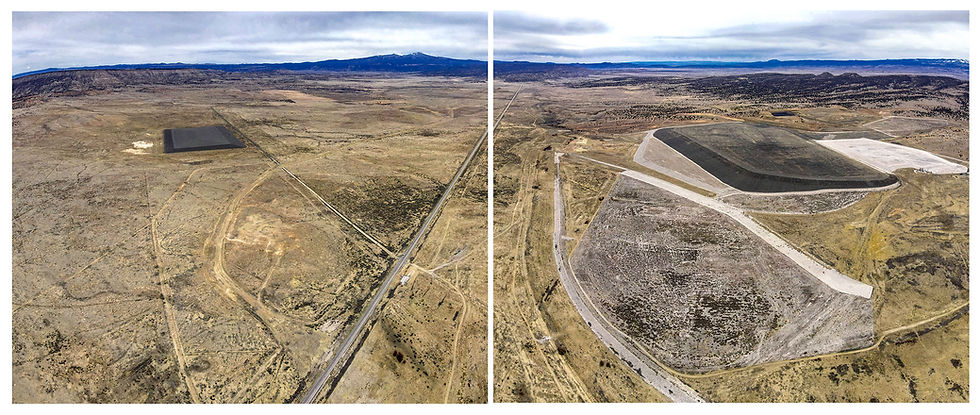Our project intends to shape a platform for voices of resilience, Indigenous knowledge and restorative systems of remediation while bearing witness to a history of environmental damage and communal loss on the Navajo Nation.
This Summer we will be Beta Testing a mobile application based on our Abandoned Uranium Mine (AUM) Database. The AUM App will show the users' location in relation to nearby AUMs and provide important information related to the site, including EPA Site Screening Reports, photographs and contamination levels.
On the Horizon
Reclamation Change, An Overview
At the heart of our project is the notion of a Just Transition, which is a “vision-led, unifying, and place-based set of principles, processes, and practices that build economic and political power to shift from an extractive economy to a regenerative economy.
Reducing Your Exposure to Uranium
Our initiative is developing an interactive mobile application to locate AUMs on the Navajo Nation. The app is meant to help Diné citizens reduce their exposure to uranium on the Navajo Nation.
Advocating for Environmental Justice with Art
A partnership with Diné College supports our Initiative to provide photographic experience to tribal students. Through our speaker series and workshops we hope to present a model of artist practice for social change.
There are OVER 500
abandoned Uranium Mines on the Navajo Nation!

Aerial Photo of Diné College
Photo/Map Credit: United States Environmental Protection Agency
About
Reframing Indigenous Remediation
This innovative plan is based on a photographic survey of Abandoned Uranium Mines (AUMs) located on the Navajo Nation. The AUMs are physical manifestations of a complex and traumatic history that (pits customary, ethics-based notions of how we should live with the land against economic development and Navajo National sovereignty) has poisoned the land and endangered a people. Our investigation will focus on the toxic legacy of uranium extraction and processing on Dinétah, that continues to threaten the health of our people and land. Bearing witness to these sites, and the front-line communities affected by them, will serve as a catalyst to design innovative solutions that refocus our understanding of what remediation can be. We intend to develop new strategies of remediation that center Diné ways of knowing as we weave together the interdisciplinary expertise required to address this most pressing concern.



The Navajo Nation produced more than half of the country’s domestic uranium reserves from the 1940’s to the 1960’s and continued as a site of commercial mining until the 1980’s. The U.S. Atomic Energy Commission was the sole purchaser of uranium until 1971. Despite well-documented health hazards associated with uranium extraction and processing, Diné workers were never warned of the danger. Today, Diné families, live amid radioactive tailings, drink contaminated water, and breath toxic dust. The Navajo Nation EPA has identified more than 521 AUMs on the Navajo Nation, the vast majority of which have not been reclaimed or remediated.






